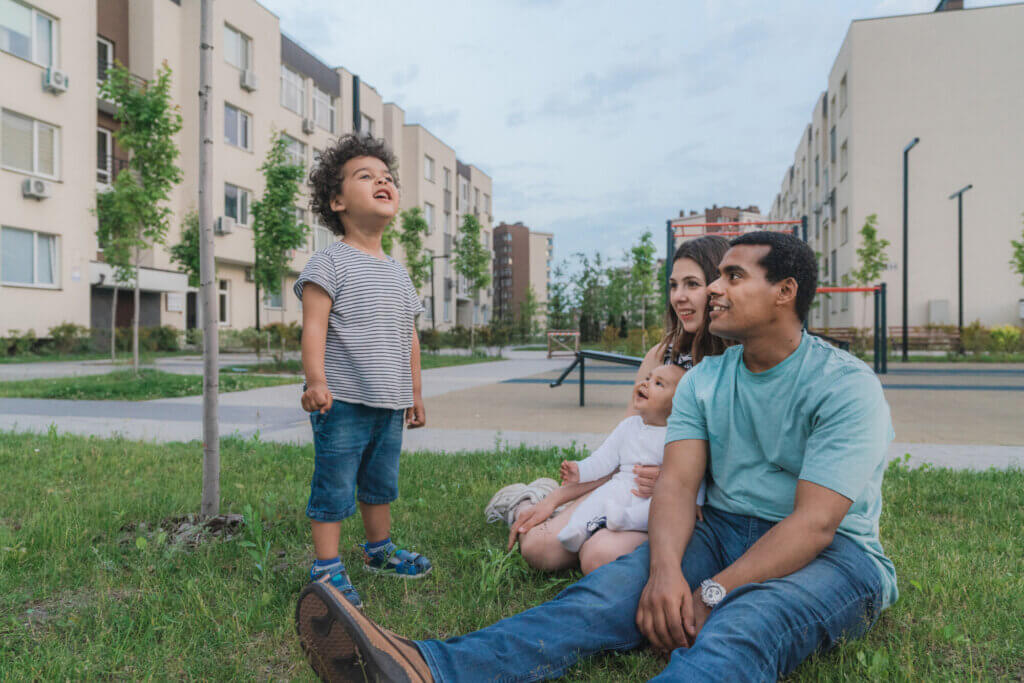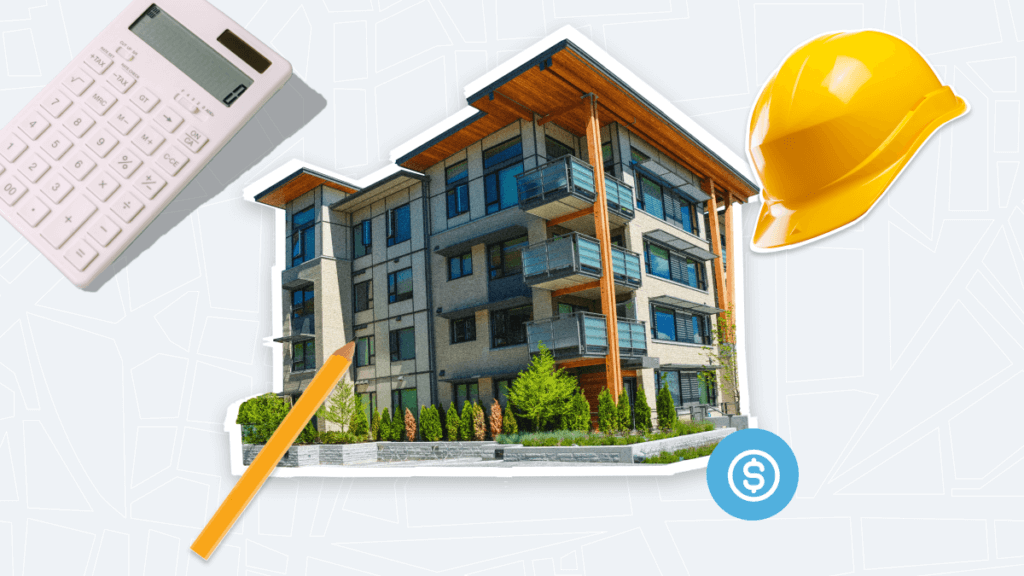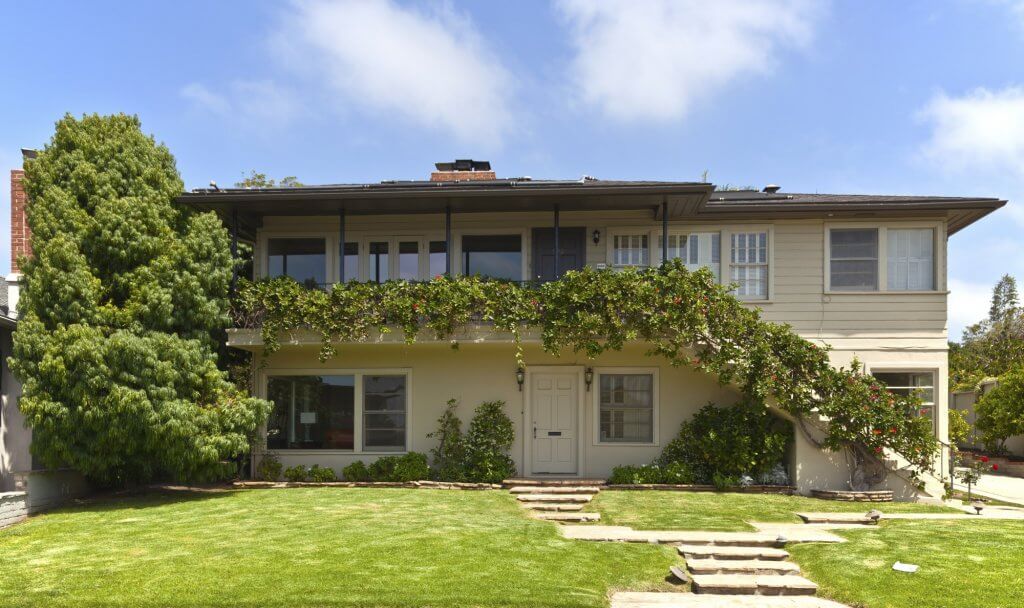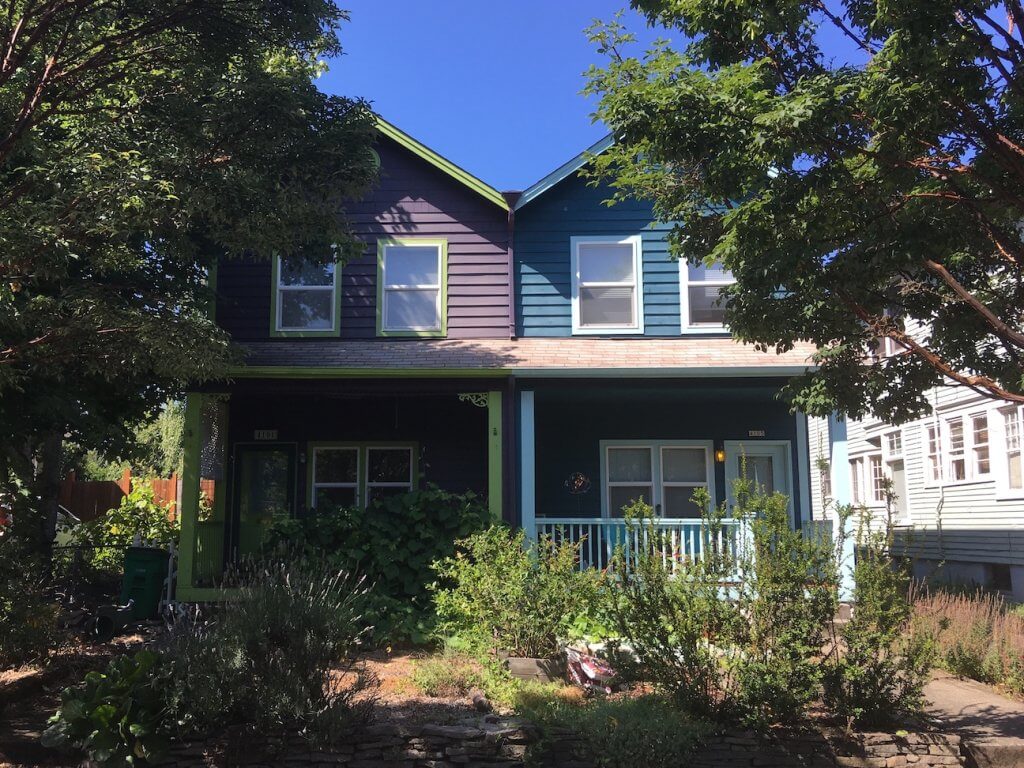New Pathways to Create More Deeply Affordable Housing: Early Lessons from HUD’s Faircloth-to-RAD Program
Published On January 31, 2023
Authors:
Ben Metcalf, Managing Director
David Garcia, Policy Director
Chris Hacnik, Terner Affiliate
Public housing in the United States provides a much-needed source of deeply affordable housing. In 2022, Public Housing Authorities (PHAs) owned and operated approximately one million units of public housing, serving over 1.7 million residents. Public housing often serves households vulnerable to housing insecurity and displacement: three-quarters of the people served by public housing have extremely low incomes (below 30 percent of the area median income). Nearly a third of residents are seniors (over age 62), and nearly one quarter live with a disability.
Yet, despite its importance, the supply of public housing has only decreased over time, as the result of two key factors. First, an amendment to public housing law—known as the Faircloth Amendment—created a de facto ban on the creation of new public housing by freezing the number of allowable units a PHA could construct or operate, beginning on October 1, 1999.1 Second, decades of underinvestment in the public housing program has resulted in ongoing losses to the existing stock. Approximately 300,000 units—more than 20 percent of the total public housing stock—have been demolished over the past 20 years due to units being uninhabitable.2 As a result of these demolitions, many PHAs operate fewer units than they did when the Faircloth Amendment was passed (thus falling below their Faircloth “cap”), but the lack of capital for construction or operations means that there has been no obvious way to re-invest in the public housing stock or rebuild units that were lost to obsolescence.
Now, the U.S. Department of Housing and Urban Development (HUD) is working towards a solution by building off of the success of the Rental Assistance Demonstration (RAD) program. RAD allows PHAs to convert existing operating subsidies to more stable long-term operating contracts, thereby utilizing mixed financing to rehabilitate older, existing stock.3 While RAD was initially designed to assist with rehabilitating existing public housing units, it has recently led to a new opportunity for PHAs to expand their overall supply of units. In 2021, HUD issued guidance for a “Faircloth-to-RAD” authority, which allows PHAs to use RAD’s financing structure to “add” units up to their Faircloth cap. Estimates suggest that Faircloth-to-RAD could help to produce as many as 235,000 new deeply affordable units nationwide, significantly boosting the overall supply of affordable housing.
In this analysis, we explore the opportunities and barriers to Faircloth-to-RAD implementation. This analysis includes interviews with staff at six PHAs in Baltimore, MD, Cambridge, MA, Miame-Dade, FL, Philadelphia, PA, San Francisco, CA, and Washington, DC.4 In addition, we also interviewed affordable housing financial consultants and HUD officials. We find that Faircloth-to-RAD shows early promise, particularly for PHAs with strong in-house development expertise and access to other affordable housing subsidy sources. Without those pieces in place, however, the potential for Faircloth-to-RAD is limited, particularly because the per-unit rental subsidies that accompany Faircloth-to-RAD contracts are not high enough or designed for financing the costs of new construction.
However, early adopter PHAs are using creative strategies to bridge this financing gap. These PHAs are integrating other types of project-based rental subsidies into a new development, using the flexibility of the Moving To Work (MTW) program to directly augment the Faircloth-to-RAD rental subsidy levels, and/or partnering with local affordable housing developers who already have projects in the pipeline. However, policy changes are needed to make Faircloth-to-RAD an effective strategy in additional markets and to tap its potential for expanding the supply of deeply affordable housing.
Background
Decades of underfunding for capital needs have resulted in a net loss of public housing units since the Faircloth Amendment’s passage in 1998.5 However, a PHA may have Faircloth “authority” to build or acquire additional units to fill the gap between the Faircloth limit and current units operated. This gap is determined by the number of units that the PHA operated on October 1, 1999, the number of units the PHA has since demolished, and the active status of the PHA’s contract with HUD that controls their receipt of these funds.6 As of September 2021, the nationwide gap was around 233,000 units, with five PHAs comprising 25 percent of all potential Faircloth units nationwide: Chicago, New York City, New Orleans, Atlanta, and Philadelphia. The majority of PHAs (83 percent) with Faircloth authority have fewer than 200 Faircloth units. On average, however, Faircloth units comprise around 20 percent of each PHA’s total stock of public housing.7
In recent decades, PHAs with residual Faircloth Authority have generally chosen not to pursue the creation of new public housing due to a variety of fiscal, legal, and financial constraints on public housing funds and properties. For example, capital providers (e.g., lenders and investors) are wary of providing residential debt for properties funded through the public housing program, given restrictions on using public housing as collateral in the event of a loan default. Additionally, Congress funds the public housing program as part of its annual budgeting process, resulting in subsidies that fluctuate annually and have generally decreased since the 1980s. As a result, most lenders and investors do not view public housing subsidies as a stable or reliable enough capital source to pledge for repayment of a long-term loan.
The Rental Assistance Demonstration (RAD) program, created by HUD in 2012, set out to remedy the lack of funding—particularly for capital improvements—for public housing. RAD allows PHAs to convert public housing capital and operating fund contracts to long-term, federally-backed Section 8 project-based vouchers (PBVs) or project-based rental assistance (PBRA) contracts. The RAD conversion from public housing to Section 8 leads to important shifts to the funding sources and institutions that can be utilized for financing. Most importantly, the conversion facilitates the use of mortgage debt, and allows for mixed-financing via the use of federal and state Low-Income Housing Tax Credits (LIHTC).8 Because the Section 8 contract provides annual funding at a predefined level—as well as increases each year determined by an operating cost adjustment factor—over the term of a 15 or 20 year contract,9 PHAs can leverage this long-term cash flow to finance debt. While the contracts are still subject to possible appropriations risk, historically these contracts have been fully funded.10 Since the program’s inception, RAD has unlocked over $15 billion in capital improvements to over 1,500 housing properties that receive federal funding.11
Faircloth-to-RAD Overview
The Faircloth-to-RAD program allows a PHA to use RAD to place long-term project-based Section 8 contracts onto additional housing units, up to the number of housing units set by its Faircloth cap. Notably, these units need not have previously been public housing; the units can be within an existing market-rate building, an affordable building not otherwise subsidized by HUD (e.g., units within a LIHTC project coming to the end of its syndication period and may no longer be required to meet particular affordability levels), or a new construction affordable housing project, either developed directly by the PHA or in partnership with other affordable housing being developed by other entities within its jurisdiction . In other words, Faircloth-to-RAD allows PHAs to expand their number of subsidized units by increasing the number of units on which project-based Section 8 contracts can be placed. These Faircloth-to-RAD units are additive to the PHA’s budget and do not count against PHA’s limited voucher pool or against its cap on the number of such vouchers that can be project-based (i.e., tied to a particular unit rather than an individual tenant). This is a critical shift, since in most places, the demand for PBVs greatly exceeds supply, particularly for new projects aiming to serve extremely low-income (ELI) households.12 Under this new authority, a PHA can expand the number of units it subsidizes up to the Faircloth cap, replacing lost stock. For example, in 2008 , Hurricane Ike led to the destruction of almost 600 public housing apartments in Galveston, TX; the PHA is using Faircloth-to-RAD to rebuild 174 new units of public housing alongside both LIHTC and market-rate units.13
The process of using Faircloth-to-RAD begins with a PHA identifying a development opportunity, pulling together a financing plan, and then securing an up-front commitment letter from HUD that provides evidence that the PHA will be allowed to create new public housing and convert those public housing units via RAD to project-based Section 8 rental assistance. The HUD commitment letter details the per-unit rent amount that the units will receive. This per-unit rent amount—the Faircloth-to-RAD contract rent—is calculated in a similar fashion to how HUD calculates its contribution for public housing capital and operating funds.14
However, these contract rent levels are often too low to enable the creation of new affordable housing units and thus represent one of the largest barriers to Faircloth-to-RAD authority being used in more places. Rent levels are intended to cover only the basic property operating expenses and are generally significantly lower than Section 8 PBVs , which have rent levels that are generally pegged to fair market rates and are frequently used to support debt. Moreover, under HUD’s formulas, new construction projects typically receive less subsidy than existing buildings because they are expected to have lower operating costs due to newer and more efficient systems (such as HVAC or other mechanical systems). These lower Faircloth-to-RAD contract rents mean that assisted units support less (or no) debt, making new projects financially infeasible or necessitating other forms of equity or subsidy.
As a result, uptake of Fairloth-to-RAD has been lower than its potential. As of late 2022, 17 PHAs have actively explored Faircloth-to-RAD development opportunities, representing over 2,000 units. We have found that key advantages in making early Faircloth-to-RAD projects possible are PHA administrative capacity, experience working with federal housing programs, and access to affordable housing development partners. Specifically, PHAs experienced in using RAD to rehabilitate or replace public housing have been more likely to pursue and implement Faircloth-to-RAD projects, as have agencies participating in the MTW program, which have more regulatory and funding flexibility. These agencies have developed successful partnerships and strategies to make Faircloth-to-RAD work and offer lessons for other PHAs.
Strategy 1: Combine Faircloth-to-RAD and Project-Based Voucher Units
One approach to Faircloth-to-RAD is to combine PBVs with Faircloth-to-RAD units within a new development. In these projects, the lower rent Faircloth-to-RAD assisted units are cross-subsidized by the higher rents provided by the units with PBVs. This approach hinges on the PHA having available PBVs to deploy within its portfolio. Interviews noted that this strategy can be particularly useful in places where the voucher utilization rate is lower due to a tight rental market. In such places, the combination of higher rent PBVs and Faircloth-to-RAD units facilitates new affordable housing supply, and ensures that the PHA can utilize its full voucher authority.
For example, in 2022, the Miami-Dade County Public Housing and Community Development Authority (PHCD) undertook two new construction projects which blended Faircloth-to-RAD with PBVs. In the first project, Brisas del Rio, PHCD and its development sponsor, The Related Group, put together a 100 percent affordable community that offered 27 Faircloth-to-RAD units, 112 PBV units, and 29 units without rental subsidy. The inclusion of Faircloth-to-RAD allowed the PHA to include more deeply subsidized units, which was particularly critical in meeting Florida’s LIHTC requirement that 15 percent of overall units serve ELI households. Because LIHTC rents are set based on AMI levels and not household income, ELI households would have had to pay $474 per month, in some cases, exceeding what is considered affordable (i.e., more than 30 percent of income). However, the Faircloth-to-RAD contract rents were set at $483 per month, providing slightly more income and ensuring that the tenants would only pay 30 percent of their income as a result of layering in HUD assistance. The long-term subsidy provided by the Faircloth-to-RAD contracts therefore comprised a small but important part of the overall financial strategy for the project.
PHCD replicated this model in its second project, Brisas del Este. Using a similar financing plan, this 161-unit fully affordable project supplemented PBVswith 30 Faircloth-to-RAD units. Again, the inclusion of Faircloth-to-RAD allowed the PHA to subsidize more units than it would have been able to otherwise, which increased the overall number of deeply affordable units in the property. However, the difference between the two rental assistance contracts was significant: one bedroom units are expected to receive a Faircloth-to-RAD rent of $727 compared to the $1,332 that the PBV units are receiving.15 The project was financially viable due to the presence of additional subsidies, including the PBV rents, but would not have been possible solely under Faircloth-to-RAD.

Brisas del Este, Miami-Dade’s second “Faircloth-to-RAD” project, contains an additional 30 Faircloth units serving ELI households.
Strategy 2: Leverage Moving to Work (MTW) authority to supplement Faircloth-to-RAD contract rent levels
Approximately 126 Public Housing Agencies around the country have been designated as MTW agencies, which provides PHAs exemptions to many existing public housing rules and gives them flexibility with how they use their federal funds.16 MTW was initially created to streamline PHA administrative processes, reform tenant Housing Choice Voucher (HCV) assistance programs, and improve the connection between jobs and housing. The flexibility of the program allows MTW Agencies to supplement Faircloth-to-RAD contract rent levels.17 Cambridge Housing Authority (CHA) is pursuing this strategy with their roughly 1,500 unit Faircloth Authority.18 Using its MTW status, CHA is boosting its Faircloth-to-RAD rents up to levels equivalent to what would otherwise be provided with PBVs (in this case, typically 120 percent of Fair Market Rent). Because the gap between Faircloth-to-RAD and PBV rents was approximately a third of the cost of a voucher, this revenue sharing functionally creates three new units for a corresponding loss of revenue equivalent to only one voucher from the PHA’s voucher pool.

![Quote: "Our ability to maneuver through these transactions speaks to the quality of the RAD Recap staff... We're every excited about these Faircloth units and the ability to use them. Now we actually turn our attenion and look over the next three to six years and have the potential to add [new] units... it's an incredible opportunity." -- Staff at Cambridge Housing Authority](https://ternercenter.berkeley.edu/wp-content/uploads/2023/01/Untitled3-300x143.png)
Strategy 3: Partner with local affordable housing developers to build out Faircloth-to-RAD units
Faircloth-to-RAD authority is also being used in partnership with affordable housing developers in building new units serving extremely low- or very low-income households. In the summer of 2022, the Philadelphia Housing Authority (Philadelphia HA) solicited proposals from affordable housing developers interested in adding 15 or more deeply affordable Faircloth-to-RAD units to new construction or substantial rehabilitation projects in their pipeline. For affordable housing developers, the Faircloth-to-RAD contract rents may be greater than the rent levels they would otherwise receive from rents paid by very low-income tenants. For the Philadelphia HA, this allows households currently on their waiting lists to access housing that is often higher quality and to do so while paying only 30 percent of their income on rent as opposed to the higher rent levels that households might pay in a LIHTC unit that does not have PBRA.19
Conclusion
PHAs have been severely limited in maintaining and creating new public housing units for decades, despite the need across the country for high-quality, deeply-subsidized housing. Faircloth-to-RAD gives PHAs an opportunity to expand the supply of affordable housing, as well as a new tool to layer in rental subsidies into existing affordable housing to deepen affordability and ensure long-term preservation. However, uptake has been limited: in 2022, only four PHAs—representing 389 units—received HUD approval to move forward with a project using Faircloth-to RAD. Most have been PHAs with MTW agency and a strong development track record that have been able to access the regulatory and financial flexibility provided by MTW to blend subsidy streams to close the gap between contract rents and actual operating costs. Offering non-MTW agencies increased flexibility to boost their Faircloth-to-RAD contract rent setting as well as expanding access to technical assistance and training to support PHAs that may have less experience with RAD or mixed-finance developments are likely to be key to increasing uptake.
While relatively new, Faircloth-to-RAD represents an important effort by HUD to work with existing tools to expand the supply of public housing. As this analysis highlights, PHAs are starting to use this new authority, but more research is needed to understand the barriers to making the program work in more places. An initial study is underway: HUD has already commissioned research, scheduled to be released in 2023, which will explore in more detail how PHAs are using this new authority, as well as assess the trade-offs inherent in changing how the Faircloth-to-RAD program’s rent levels are calculated.20 Navigating these trade-offs may be difficult, but the benefits of tapping into the full potential of Faircloth-to-RAD and the number of new public housing units it could create is worth it.
Acknowledgements
Thank you to staff at the Housing Authority of Baltimore City, Cambridge Housing Authority, the Miami-Dade Public Housing and Community Development Department, the Philadelphia Housing Authority, San Francisco Housing Authority, and the District of Columbia Housing Authority for sharing their time and expertise. We would also like to thank Ophelia Basgal, Pat Costigan, Tom Davis, Will Lavy, Luke Fallon, and Hiren Nisar for their insights and review. Thank you to our Terner Center colleagues Carol Galante, Carolina Reid, and Ryan Finnigan.
This research does not represent the institutional views of UC Berkeley or of the Terner Center’s funders. Funders do not determine research findings or recommendations in Terner Center’s research and policy reports.
Footnotes
- Passed in 1998, the Faircloth Amendment did not ban new public housing construction, but it did prevent new operating subsidies for new units, effectively stopping any new public housing construction.
- Collinson, R., Gould Ellen, I., & Ludwig, J. (2015). “Low-Income Housing Policy.” National Bureau of Economic Research. Working Paper 21071. Retrieved from: https://www.nber.org/papers/w21071.
- Reid, C. (2017). “Assessing the Early Implementation of the Rental Assistance Demonstration Program.” Terner Center for Housing Innovation, UC Berkeley. Retrieved from: https://ternercenter.berkeley.edu/wp-content/uploads/2017/10/RAD_Report_FINAL.pdf.
- Interviews took place in 2022.
- Congress appropriates and HUD administers public housing “dollars” through two funds annually, the Public Housing Capital Fund and Public Housing Operating Fund. Capital Funds may be allocated towards the physical needs and repairs of projects while dollars from the Operating Fund may be used for day-to-day maintenance and operational costs. The Faircloth authority levels can be found at: https://www.hud.gov/sites/dfiles/PIH/documents/Faircloth%20List_12-31-21_FINAL.xlsx.
- This contract is referred to as a PHA’s Annual Contributions Contract or “ACC.”
- Kimura, Donna. “Top Public Housing Authorities.” Affordable Housing Finance. Retrieved from: https://www.housingfinance.com/developments/top-public-housing-authorities.
- RAD projects often include conventional debt, Low Income Housing Tax Credits, FHA mortgage insurance, grants (such as HOME and CDBG), and state and local housing trust funds. See: Econometrica, Inc. (2016). Evaluation of HUD’s Rental Assistance Demonstration (RAD): Interim Report. Retrieved from: https://www.huduser.gov/PORTAL/publications/RAD_Evaluation.html; Smith, D. A. (2015, August). Why RAD Worked. Tax Credit Advisors, 27(8). Retrieved from: https://www.housingonline.com/wp-content/uploads/2015/07/TCA-August-2015.pdf.
- These contracts are also often automatically renewed.
- The contracts are legally binding and policymakers know that failing to honor the Housing Assistance Payments (HAP) contracts would lead to significant tenant displacement and property defaults, including properties with FHA mortgages, making it less likely for policymakers to refuse funding.
- U.S. Department of Housing and Community Development RAD Resource Desk. (2020). “RAD Fact Sheet.” Retrieved from: https://www.radresource.net/pha_data2020.cfm.
- Reid, C., Finnigan, R., & Manji, S. (2022). “California’s Homekey Program: Unlocking Housing Opportunities for People Experiencing Homelessness.” Terner Center for Housing Innovation at UC Berkeley. Retrieved from: https://ternercenter.berkeley.edu/wp-content/uploads/2022/03/Homekey-Lessons-Learned-Final-March-2022.pdf.
- Cohen, J. (2021). “New Public Housing? HUD Has Found a Way.” Shelterforce. Retrieved from: https://shelterforce.org/2021/10/08/new-public-housing-hud-has-found-a-way/.
- The Faircloth-to-RAD contract rent is calculated using a formula established under the RAD program rules, and is based on the anticipated project-specific costs of operating the development under consideration, including the number of units, the structure and characteristics of the building, and the property’s location, among others. As is the case with Section 8 PBVs and PBRA contracts, projects funded by a Section 8 RAD Faircloth Contract are guaranteed receipt of a baseline contract rent. This amount, the Base Year Faircloth-to-RAD contract rent, is guaranteed throughout the initial 15 to 20 year contract term. The Base Year Faircloth-to-RAD contract rent is inflated annually by an Operating Cost Adjustment Factor (OCAF), a number that HUD calculates and publishes annually. OCAFs in recent years average 2.70 nationally. PBV and PBRA rules and regulations still apply to the Faircloth-to-RAD contract rent setting. RAD does not allow PBV rents to exceed the lesser of 110 percent FMR or the reasonable rent standard. PBRA contract rents may be priced up to 120 percent FMR, depending on the results of a third party rent comparability study. https://www.novoco.com/periodicals/articles/tips-avoid-common-rad-pitfalls.
- HUD User Office of Policy Development & Research. “HUD Fair Market Rents (40th Percentile Rents).” Accessed June 7, 2022. Retrieved from: https://www.huduser.gov/portal/datasets/fmr.html; and correspondence from HUD regarding the Brisas Del Estes NARR.
- U.S. Department of Housing and Urban Development. “Moving to Work (MTW) – Participating Agencies.” Retrieved from: https://www.hud.gov/program_offices/public_indian_housing/programs/ph/mtw/mtwagencies.
- In any fiscal year, PHAs are provided with a finite amount of Section 8 HCVs. PHAs are allowed to project-base 20 percent of their Section 8 HCVs in a fiscal year. Under Faircloth-to-RAD, MTW PHAs can expand the total amount of vouchers that they are allowed to project-base (i.e., use PBVs) in excess of the number currently allowed by Section 8 program rules. This effectively creates an additional “pool” of vouchers that the PHA may then designate to serve different populations or to incentivize specific types of new development
- U.S. Department of Housing and Community Development. “RAD Spotlight on Cambridge, MA.” Retrieved from: https://www.hud.gov/sites/dfiles/PIH/documents/BenefitsMTWRAD03032020.pdf http://cambridge-housing.org/wp-content/uploads/2020/08/HUD-RAD-Spotlight-on-Cambridge-1.pdf.
- Philadelphia Housing Authority. “Solicitation #: P-005103: Request for Proposals (RFP) ACC (Public Housing) Operating Subsidy Program and Faircloth to RAD (Rental Assistance Demonstration)”. Page 6. Note that, as an MTW, Philadelphia HA is also augmenting its Faircloth-to-RAD contract rents to match the at-market PBV rents. This higher contract rent level is particularly helpful in motivating developer participation as the PHA is prioritizing projects that expand resident opportunity, provide resident supportive services, and serve either family or non-senior special needs populations.
- 2M Research was selected by HUD as the lead for this study; the Terner Center is a subcontractor to 2M research assisting with project execution.





